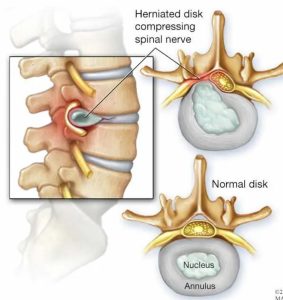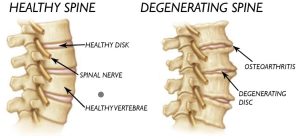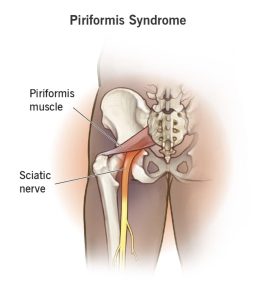What is Sciatica?
The term sciatica is widely used by people to describe a condition of back or leg pain that they may be experiencing. When in actuality the term sciatica is not a condition, but symptoms of a condition that a person may be experiencing. Sciatica refers to symptoms in the buttock, leg or foot. Those symptoms may be pain, numbness or weakness in the leg or foot. There’s one sciatic nerve on each side of the body that extends down through the buttock, leg and into the foot. The sciatic nerve is the largest nerve in the body (about the diameter of a pencil or crayon) that originates from multiple nerves exiting the spinal column of the low back. You can think of the sciatic nerve as a river that is formed from multiple tributaries that originate up stream. In most cases of sciatica one of these multiple tributaries get disrupted and then cause issues down stream. The pain, numbness or weakness felt in the buttock, leg or foot is caused from that disruption. In most cases that disruption is due to compression and irritation of an exiting nerve root (tributary) from the spinal column.
Common causes of sciatica:
Disc Herniation – Our vertebral discs sit between the vertebrae of our spine and are composed of a thicker outer layer and a more gel like inner layer. Overtime the outer layer can weaken and with compression of the vertebrae above and below causing the inner gel like layer to push out the back and compress on the exiting nerve.

Disc Degeneration and Stenosis – Overtime our vertebral discs can weaken and degenerate causing narrowing of the canal openings of the spine leaving the exiting nerve susceptible to compression and irritation.

Spondylolisthesis – This condition occurs when one vertebrae slips forward or backward on another vertebrae causing compression of the exiting nerve root.

Another condition that is a little less common and can also irritate the sciatic nerve is called piriformis syndrome. Piriformis syndrome is when the piriformis muscle compresses on the sciatic nerve. The piriformis muscle is located in the buttock region where the sciatic nerve passes under and in rare cases thru it. If this muscle becomes inflamed, tight or injured it can compress and irritate the sciatic nerve causing pain in the buttock and leg region. Similar to what you would feel with nerve compression in the low back, but pain more localized to the buttock and upper leg.

It is estimated that sciatica will effect 40% people on their lifetime[1]. So what should one do if they are experiencing pain from a compressed or irritated sciatic nerve? The vast majority of the time symptoms can be alleviated without surgical intervention.
Individuals who suffer from disc-related sciatica will show no symptoms within 1-12 months of onset without surgical intervention 95% of the time[2]. This is why conservative treatment such as chiropractic, physical therapy, and massage therapy are a great starting point when dealing with sciatica.
Searching for an at-home solution?
This device is a table you can lay on and pull a lever to decompress your spine. This particular product also has a cervical attachment to decompress the neck as well!
The inversion table is a tripod style device which allows you to go almost upside down and allow gravity to decompress your spine as well. This option is not ideal for those struggling with uncontrolled high blood pressure or eye issues where a pressure increase could be detrimental.
Dealing with one of these potential issues and the home options are not working? Contact the office today. One of our three staff physicians can help properly diagnose and get you toward a rapid recovery!
[1] Harvard Health Publishing. (2016, February). Sciatica: Of all the nerve. Harvard Health. https://www.health.harvard.edu/pain/sciatica-of-all-the-nerve.
[2] Legrand, E., Bouvard, B., Audran, M., Fournier, D., & Valat, J. P. (2007). Sciatica from disk herniation: Medical treatment or surgery? Joint Bone Spine, 74(6), 530–535. https://doi.org/10.1016/j.jbspin.2007.07.004